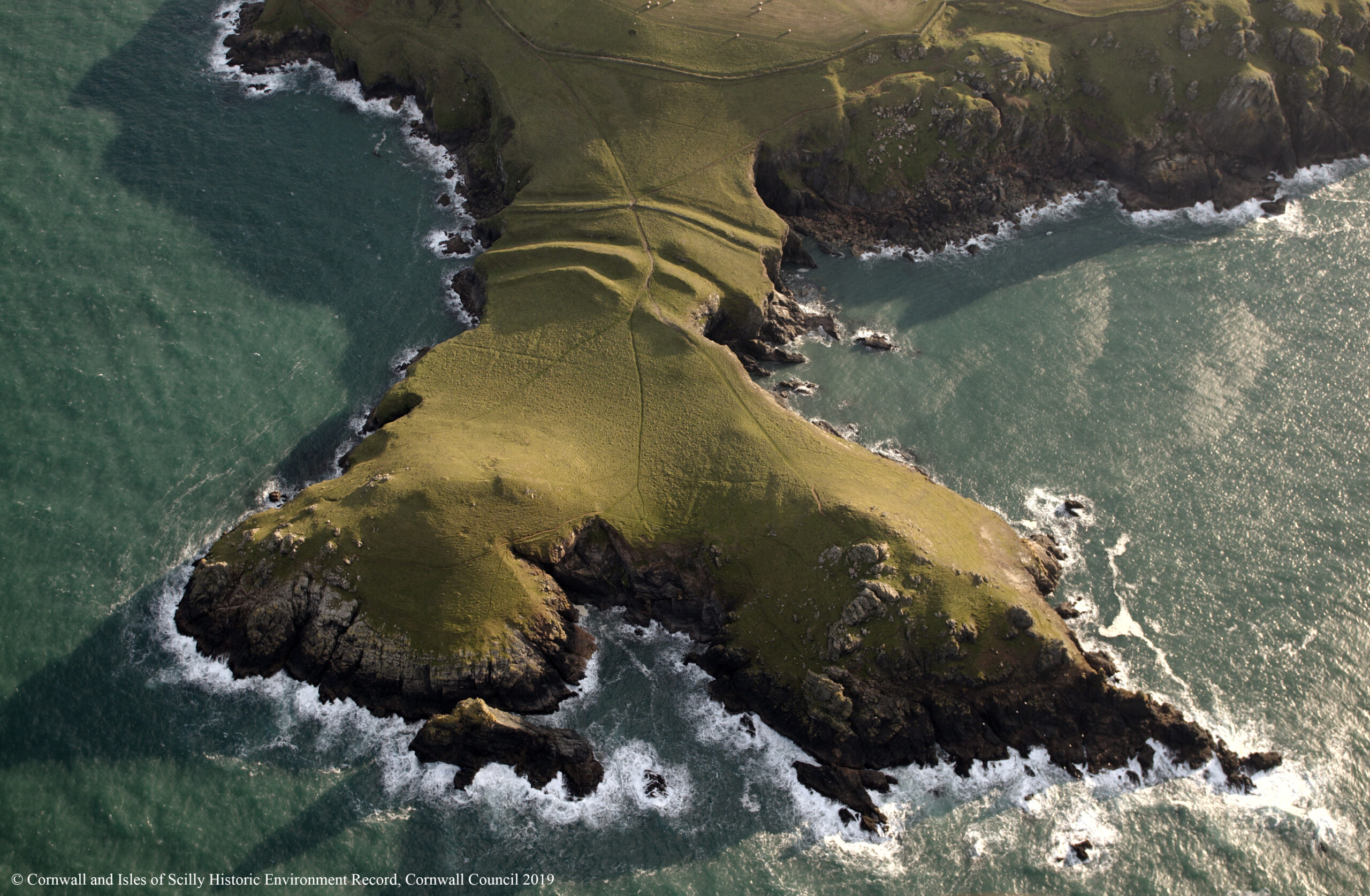
Landscape charity looking for a new leader
Cornwall National Landscape Trust are looking for a new Chairperson to lead the charity which supports the protected landscape in Cornwall. The Trust are looking for a Chair that possesses...
James Richards

Hillforts and Promontory Forts are built across Cornwall, farming communities thrive in roundhouses and metal tools accelerated deforestation.
Period
800BC – AD43 The Iron Age (2,200 – 2000 years ago)
Iron is a hard metal and favoured for weapons. Cornwall had its own deposits of iron ore and the shift away from bronze was significant. Unenclosed settlements of round houses may have remained, the people still grew vegetables and kept geese, goats, pigs and sheep. But it is new defensive structures that tell us the story of a more troubled time.
Many hundreds of farmsteads or ‘rounds’ were built on the slopes of good farmland, enclosed by a single rampart and ditch; clearly the people living there felt vulnerable. Perhaps they paid tribute in return for protection to wealthy tribal chieftains ruling from hillforts and wielding power. Classical authors portray the Britons as dominated by a warrior aristocracy fond of fighting, feasting, and boasting.
These formidably defended hill-top forts were substantial earthworks with rubble or stone ramparts topped by wooden palisades or stone walls and deep, sometimes rock-cut, ditches. Fortified gateways gave access to well organised outer roundhouse settlements. Some hillforts had multiple enclosures, possibly for the corralling of prized cattle. Cliff castles were sited on coastal headlands, often in such exposed locations they may have been only temporary refuges. All were strongholds for display, trade and the politics of power.
Art and pottery styles changed completely from the Bronze Age and burials changed to cemeteries of pit-graves, some lined with stone, and the dead placed on their side in a crouched position. Little is found with them, perhaps just the brooch that fastened their clothes.




7 Monuments
5 Monuments
4 Monuments
4 Monuments
